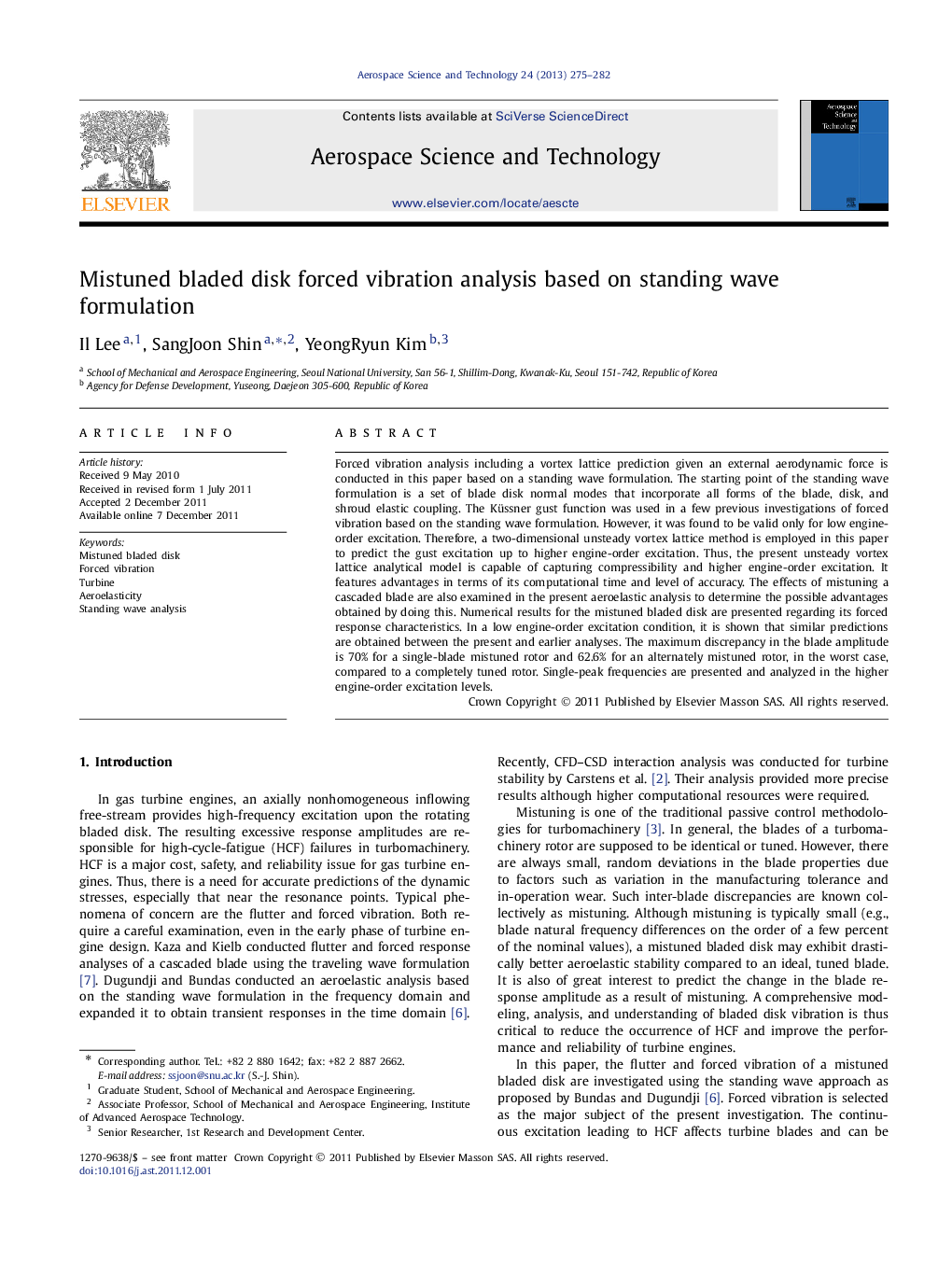| Article ID | Journal | Published Year | Pages | File Type |
|---|---|---|---|---|
| 1718338 | Aerospace Science and Technology | 2013 | 8 Pages |
Forced vibration analysis including a vortex lattice prediction given an external aerodynamic force is conducted in this paper based on a standing wave formulation. The starting point of the standing wave formulation is a set of blade disk normal modes that incorporate all forms of the blade, disk, and shroud elastic coupling. The Küssner gust function was used in a few previous investigations of forced vibration based on the standing wave formulation. However, it was found to be valid only for low engine-order excitation. Therefore, a two-dimensional unsteady vortex lattice method is employed in this paper to predict the gust excitation up to higher engine-order excitation. Thus, the present unsteady vortex lattice analytical model is capable of capturing compressibility and higher engine-order excitation. It features advantages in terms of its computational time and level of accuracy. The effects of mistuning a cascaded blade are also examined in the present aeroelastic analysis to determine the possible advantages obtained by doing this. Numerical results for the mistuned bladed disk are presented regarding its forced response characteristics. In a low engine-order excitation condition, it is shown that similar predictions are obtained between the present and earlier analyses. The maximum discrepancy in the blade amplitude is 70% for a single-blade mistuned rotor and 62.6% for an alternately mistuned rotor, in the worst case, compared to a completely tuned rotor. Single-peak frequencies are presented and analyzed in the higher engine-order excitation levels.
